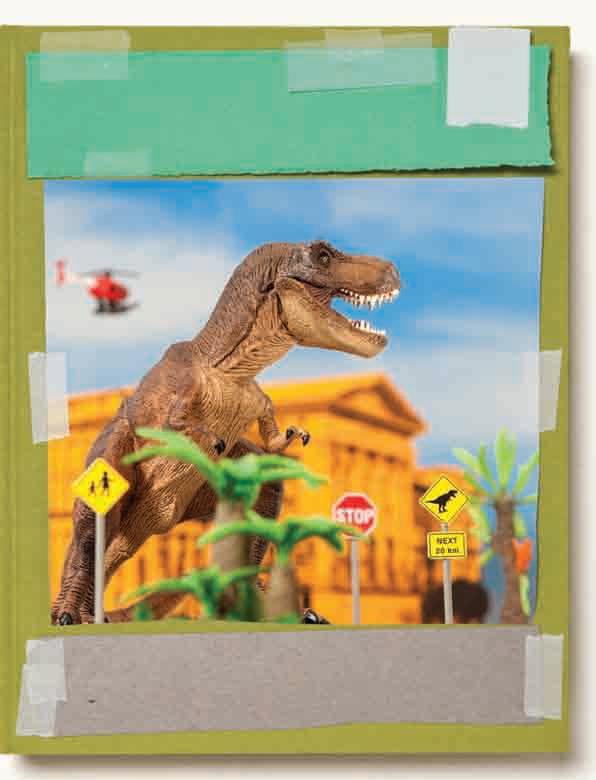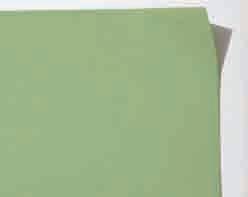
6 minute read
Highlights & snapshots Our annual report to Members
reVIEW
THE ABORIGINAL STORY OF BURKE AND WILLS: FORGOTTEN NARRATIVES
Edited by Ian D Clark and Fred Cahir CSIRO Publishing, 2013 There are many ironies at the heart of the Burke and Wills story. It was ironic (and tragic) that Robert O’Hara Bourke, with no prior experience as a bushman, surveyor or navigator, was chosen to lead one of Australia’s most ambitious and challenging overland explorations. It was ironic that the ‘ghastly blank white man’s grave’ of Central Australia was yet so intimately familiar to its Aboriginal residents, full of life-giving plants and animals and charged with spiritual significance. It was ironic too that when the starving explorers eventually did learn to gather an Aboriginal food – the seedlike sporocarps of nardoo, an arid zone fern – they did not learn to prepare it properly, such that its toxins may have actually contributed to their deaths. But perhaps the most surprising irony to emerge from this new book is the way that Aboriginal people disappeared from the Burke and Wills story as its narrative became a ‘national myth of heroic endeavour’. The Aboriginal story of Burke and Wills: forgotten narratives represents a deliberate attempt to challenge this literary terra nullius. The book is the first major study of the cross-cultural exchanges that took place on the Burke and Wills expedition and subsequent rescue attempts. The seventeen chapters by a multi-disciplinary team of academics, Aboriginal elders and artists explore how expedition members interacted with Aboriginal people. The authors delve into the cultural background of Aboriginal people living in the Coopers Creek region and explore Aboriginal oral history accounts of the expedition, drawing on a rich source of archival documents, anthropological and linguistic research, visual art and historical photographs. At its best the book draws on Indigenous perspectives to shed a whole new light on this seemingly familiar story. For example Darrell Lewis describes an intriguing oral history that challenges the standard narrative that Burke died of deprivation and exhaustion. Phillip Clarke, by documenting the explorers’ use (and misuse) of Aboriginal ecological knowledge, shows just how narrow the margin between life and death may have been for the ill-fated pair. Fred Cahir explores the ‘terrible bind’ of the Yandruwandha people, caught between their cultural obligations to assist strangers in need and the equally compelling need to repel culturally insensitive intruders. Ultimately in this book, it is the Yandruwandha who step from the shadows to the centre of the Burke and Wills story. It is sure to be enjoyed by anyone with an interest in the history of Australian exploration or in the development of our Australian national identity.
DR SCOTT MITCHELL
reVIEW
THE WOODHEN: A FLIGHTLESS ISLAND BIRD DEFYING EXTINCTION
by Clifford Frith CSIRO Publishing, 2013 A paradox for ecologists and evolutionary biologists is that they are driven by a desire to understand diversity, yet some of the most influential discoveries have been made in the most species-poor ecosystems. Because island faunas usually arise from the occasional and somewhat unpredictable arrivals of immigrants, they tend to have fewer species than comparable mainland areas – a feature that has stimulated major breakthroughs in evolutionary ecology by legends like Darwin, Wilson and Diamond. Some immigrant species are able to establish and prosper, while others become extinct because they are unable to establish or co-exist with other hapless arrivals on the island zoo. But if a species is able to withstand this juggling act of immigration and extinction for long enough, it can evolve within its new environment and differentiate from its mainland ancestors. The flightless Woodhen of Lord Howe Island, like many other island rails, evolved from a free-flying immigrant ancestor. Given the physiological cost of developing and servicing the powerful musculature required for flight, selection against flight should be great in environments which are naturally free of mammalian predators, such as Lord Howe. Once flight is lost, dispersal between islands becomes extremely infrequent and island rails are free to evolve into distinct species without immigrants polluting their gene pools. It’s truly remarkable (to me at least!) that flightlessness has evolved multiple times, with perhaps 1500 species of island rail in existence before humans moved across Oceania and extinguished them. The Woodhen of Lord Howe Island was unwary and easily captured by new mammalian immigrants, providing fresh meat and eggs to sailors and their accompanying dogs, cats, pigs and rats. By 1887 an Australian Museum scientist reported that woodhens ‘… were soon to become extinct unless protected’, but their decline continued, perhaps assisted by an overzealous 1915 collector (82 skins!), and their population eventually dropped to 30 individuals by the 1970s. They were then saved from extinction by a dedicated team (including Australian Museum scientists, I’m relieved to say) who implemented a captive breeding program and eliminated the bird’s main predators. The Woodhen’s population has now stabilised at around 250 – a heartening ‘back from the brink’ story fully documented in this useful volume. There are two audiences for this book: conservation managers, for whom this book is a handy, comprehensive manual, and lay readers, for whom the extraordinary level of detail may sometimes make for frustrating reading. However it is worth persevering with because the content is so rich, and the setting so compelling, that the story ultimately provides an inspirational tale of conservation in action.
DR RICHARD MAJOR
Summer December 2013 to March 2014
liftout for young scientists
ACTIVITIES
make your own dinosaur meet the neighbours
INTERVIEW
animator matt drummond
COLLECTOR’S CARD
guanlong, the crown dragon
INFO
carla’s blog meet the family
TYRANNOSAUR TIME!

ZOOM IN
TO THE MUSEUM
to see our latest dinosaurs exhibition, Tyrannosaurs: meet the family. And don’t forget to see our regular Dinosaurs exhibit while you’re here!
FUN FACTS
Tyrannosaurus rex (T. rex) was known as the king of the dinosaurs. Its name translates to Tyrant Lizard King.

T. rex was over 12 metres long, 3.5 metres tall at the hips, towering to 7 metres, and weighed up to 8 tonnes. That means it was longer than a bus, tall enough to look into an upstairs window and heavier than an African bull elephant.
FUN FACT

The first Australian dinosaur bones ever found were collected from Cape York by the crew of HMS Fly in 1844 and taken back to England. It was 50 years later that they were named Agrosaurus and placed with the prosauropods.
CARLA’S BLOG
Hi, I’m Carla and I work at the Australian Museum.
I love nature and science and I’m here to tell you stories and share interesting facts.
Just this morning, I was digging a burrow in the bush and came across a big dinosaur bone. So I brought it into the Museum and asked one of the scientists what it belonged to. After a close look they said it was from a Muttaburrasaurus – a large plant-eating dinosaur that lived in Australia more than 100 million years ago. Cool!
Did you know that the king of dinosaurs, T. rex, was born with feathers, just like a cuddly bird? Maybe they aren’t so scary after all.


Tyrannosaurs have arrived at the Australian Museum!
On the cover
Styling by Jeremy Austen. Photo by Stuart Humphreys.

MAKE YOUR OWN DINOSAUR MODEL
1 Draw and colour in your dinosaur any way you like using crayons, paint, coloured pencil or all of the above!
2 Glue the page to a piece of stiff card, then cut out the dinosaur, remembering to include tabs to act as a stand. tab 3 Use coloured paper to add special features.
4 Find some feathers to stick on to the dinosaur
5 When you’re done, fold the tabs to make a stand, then admire!
tab










